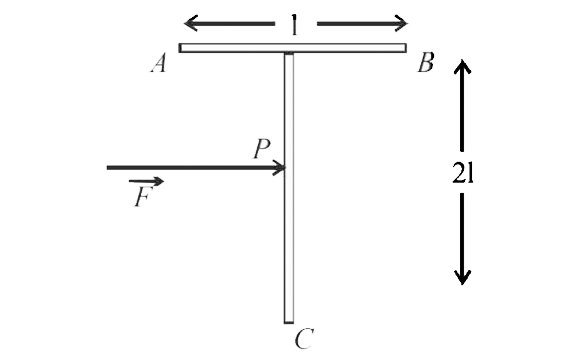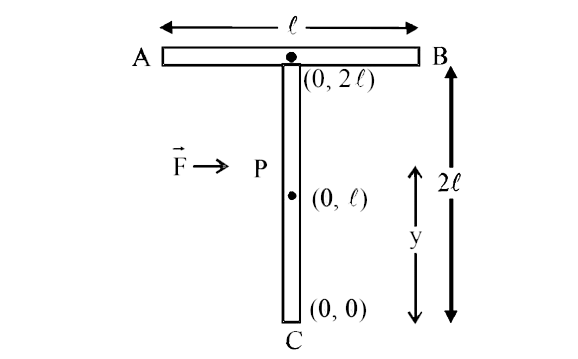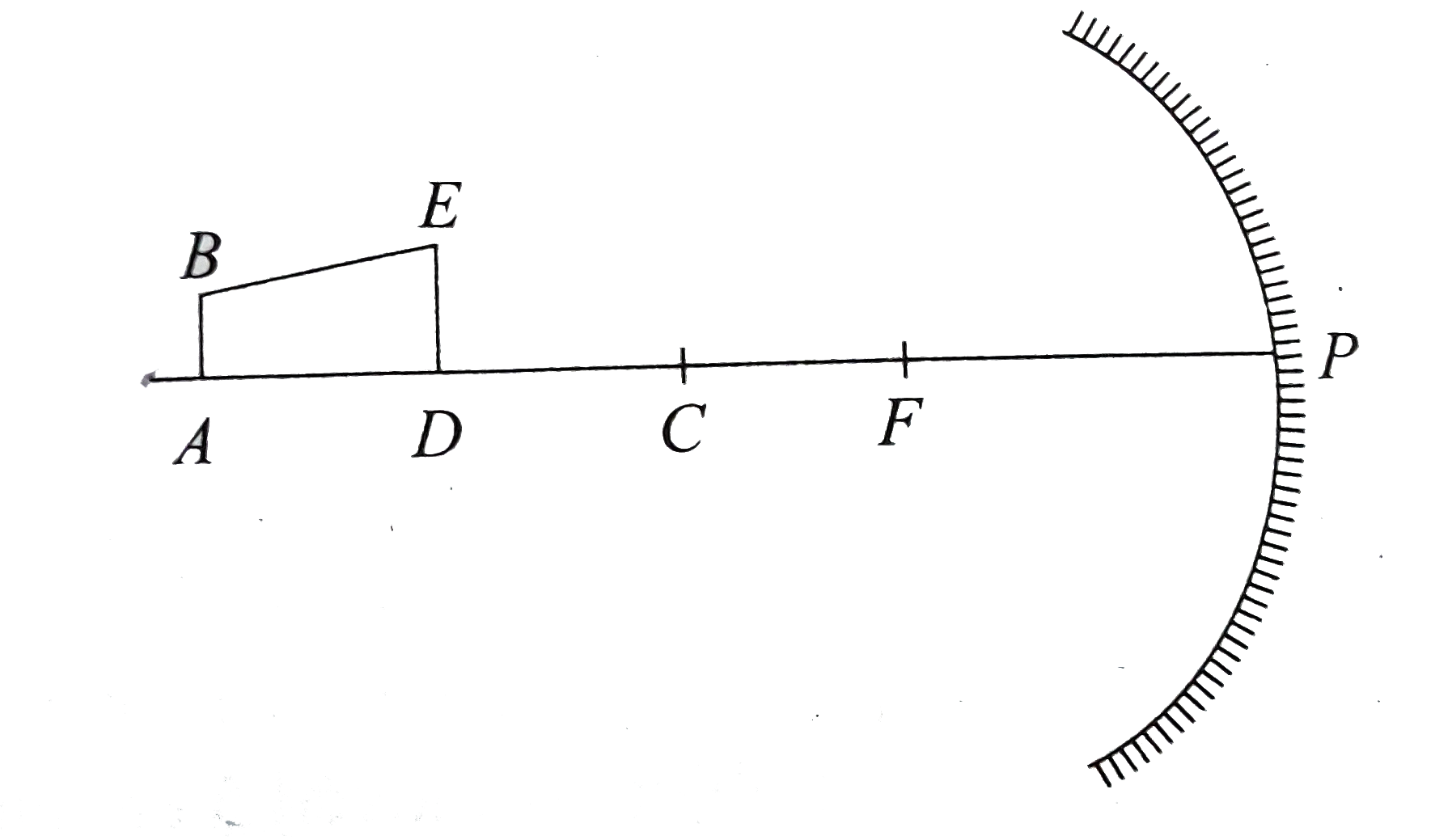A 'T' shaped object with dimensions shown in the figure, is lying on a smooth floor. A froce 'vacF' is applied at the point P parallel to AB, such that the object has only the translational motion without rotaion. Find the location of P with respect C.

32l
23l
l
43l
The correct Answer is:D
(d) 
To have linear motion, the force →F has to be applied
at centre of mass.
i.e. the point 'P' has to be at the centre of mass
y=m1y1+m2y2m1+m2=m×2l+2m×l3m=4l3
Similar Questions
Locate the image of the point object O in the situation shown in figure. The point C denotes the centre of curvature of the separating surface.

View SolutionA 'T' shaped object with dimensions shown in the figure, is lying on a smooth floor. A force →F is applied at the point P parallel to AB such that the object has only the translational motion without rotation. The location of P with respect to C is

View SolutionA 'T' shaped object with dimensions shown in the figure, is lying on a smooth floor. A force 'vecF' is applied at the point P parallel to AB, such that the object has only the translational motion without rotation. Find the location of P with respect C.
View SolutionAn inverted T -shaped object is placed on a horizontal floor as shown in Fig. A force F is applied on the system as shown in Fig. The value of x so that the system performs pure translational motion is
View SolutionPortion AB of the wedge shown in figure is rough and BC is smooth. A solid cylinder rolld without slipping from A to B . Find the ratio of translational kinetic energy to rotational kinetic energy, when the cylinder reaches point C . .
View SolutionAn object ABED is placed in front of a concave mirror beyond the center of curvature C as shown in figure., State the shape of the image.

View SolutionThe momentum p of an object varies with time (t) as shown in figure. The corresponding force (F)- time (t) graph is -
View SolutionA 'T' shaped object with dimensions shown in the figure, is lying on a smooth floor. A force 'vecF' is applied at the point P parallel to AB, such that the object has only the translational motion without rotation. Find the location of P with respect C.
View Solution

